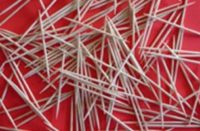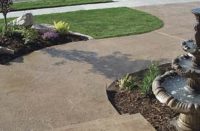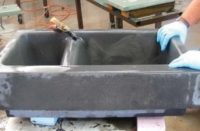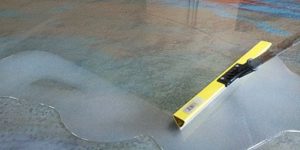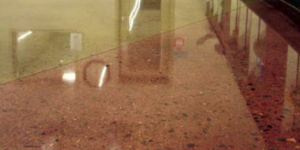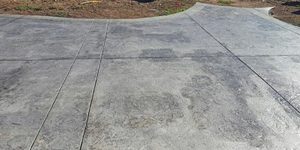A very noticeable trend with decorative concrete over the last decade is that the end users and the design community have become much better educated, not only on the types of finishes and products available, but also on how they are installed and what to expect in terms of long-term performance.
The reason is twofold. First is good old saturation. Years of comprehensive training and education from those selling and installing decorative products and services have taken our industry mainstream and have made a noticeable impact.
Second is the Internet. The amount of information available online and the ease of obtaining it have increased astronomically. The downside to this mass of information found online is the confusion that can occur when trying to figure out what to use or which product is best suited for a specific project.
It should come as no surprise that selecting sealers for decorative work ranks as one of the most searched subjects online, and selecting a sealer remains a top concern I get from end users and installers alike. This is where “S.A.P.” comes into play, which has served me well when selecting what sealer or coating is best for a specific decorative concrete project.
“S” is for safety. Safety is and should always be first on every job. When I talk about safety issues with sealers or coatings I mean more than avoiding slip problems once the sealer is dry. Just as important are odor and flammability issues during installation. The key questions to ask include, but are not limited to: What are the parameters of the project in regard to these safety issues? Is the job interior or exterior? If interior, what is the ventilation system like and will the building be occupied? Are there open ignition sources (pilot lights, open flames, other trades using torches or welding equipment, or someone smoking) in close proximity? Is the area prone to being wet? Does the surface being sealed have a slope and what is the inherent texture?
Ultimately, the question we are asking is whether we need to rule out the use of higher-solids sealers and coatings that can create slip issues when wet, and on top of that, whether solvent-based systems that have significant odor and flammability issues need to be eliminated from the job.
For interior projects I tend to rule out most solvent-based systems with the exception of those with very high solids content. In recent years the threat of terrorism has put the general public on edge when it comes to solvent odors. This has led to buildings being evacuated and jobs being shut down because a solvent-based sealer or coating was being used during working hours in an occupied building.
I recall a project a few years back where a solvent-based acrylic sealer with 30 percent solids was being used to seal a stained floor of a yogurt shop being remodeled on the far end of a strip-mall shopping center. I was amazed that within 15 minutes of sealer application, the entire five-unit strip mall was overcome with the strong smell of solvent. Even with the doors open and a fan blowing, the solvent fumes migrated through the HVAC system to all the other units. This led to lots of explaining and reassuring that there were no long-term effects and the odor would go away quickly.
If the project is exterior, either solvent or water-based systems will work, and I usually recommend lower solids (20 percent or less). A grit additive can also be added to increase the coefficient of friction, which aids in reducing slip and fall issues when the sealer is wet.
“A” is for appearance. Simply put, what do you want the finished surface to look like? The gloss of the sealer is determined by the type of resin in it. The level of gloss that decorative sealers and coatings can achieve ranges from matte to high gloss and most levels in between. The most popular remains high gloss, but in recent years satin and matte finishes have become more popular as they give a more natural look and tend not to show scuffs, scratches, and normal dirt as much as their glossy counterparts do. With recent advances in sealer technology, almost all the different levels of gloss can be achieved with water-based and solvent-based sealer and coating systems.
“P” is for performance. What will the sealer or coating be asked to do in regard to durability and life span? On top of that, another factor to consider is maintenance and what, if any, the end user wants to do and is willing to do. There is a big difference in regard to performance when you compare an acrylic sealer with 15 percent solids to a two-part polyurethane coating with 75 percent solids. Picking which sealer or coating is right for your project will come down to how it will be used and the level of use it will see. Using the 75-percent solids two-part polyurethane coating on a stained floor in a residence where two retired people live might be considered overkill. On the flip side, using the 15-percent solids acrylic on a bar or restaurant floor where thousands of people will walk and lots of potentially oily contamination will be present is asking for a failure within six months. It comes down to matching the sealer or coating’s performance characteristics to what the project demands.
After going through the S.A.P. criteria for a project, the selection process for what type of sealer or coating should be narrowed down enough to make picking the right product much easier. The S.A.P. system also works well when you have a client or architect on the fence regarding what sealer to use for a specific project.
What S.A.P. does not take into consideration is price, which unfortunately is often the first thing that is considered when selecting a sealer or coating. I am not saying that price is not important, but I always recommend working through S.A.P. before looking at price.
